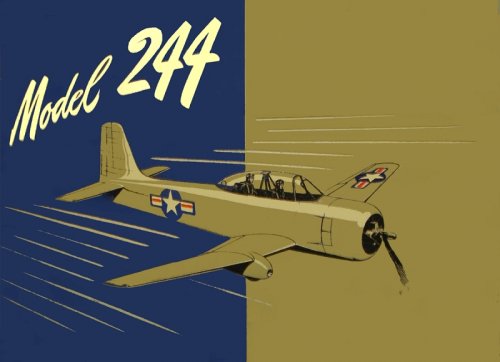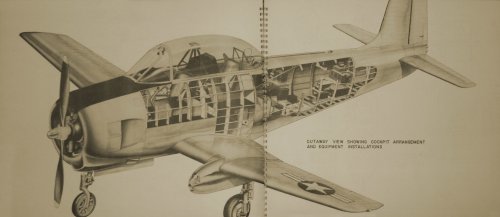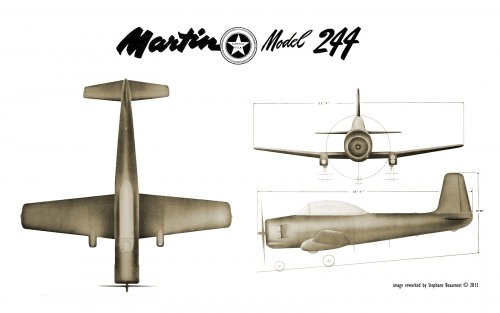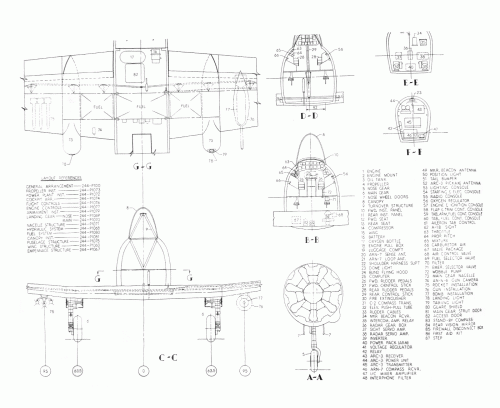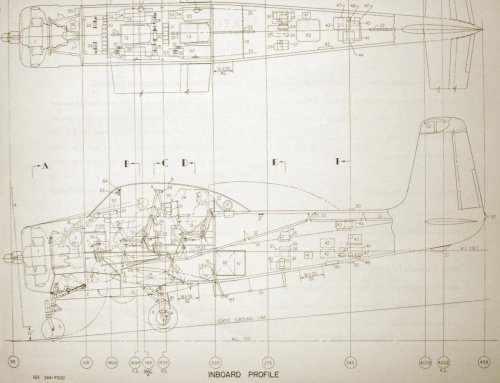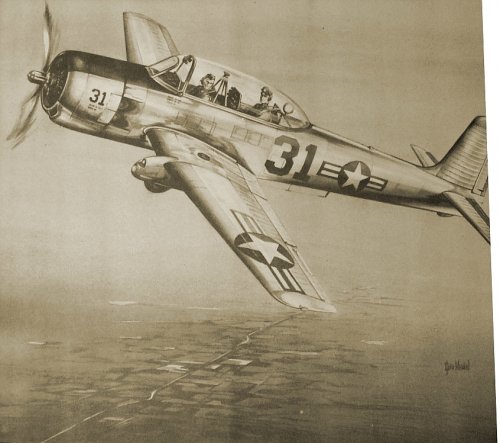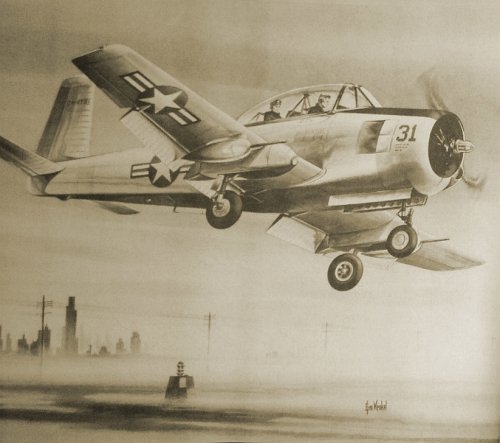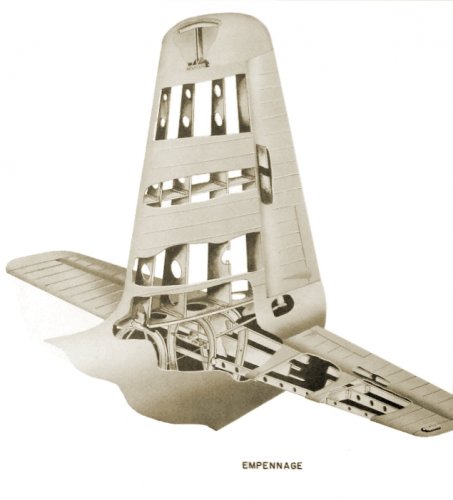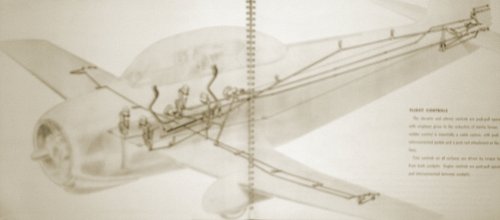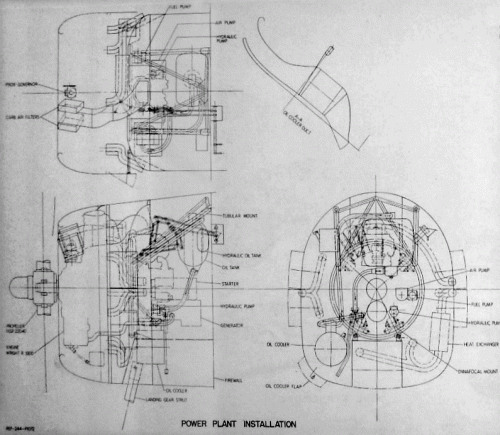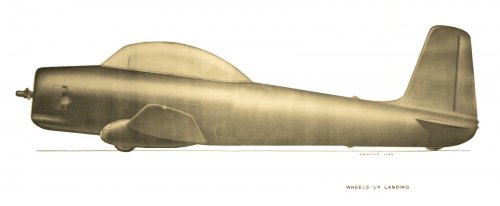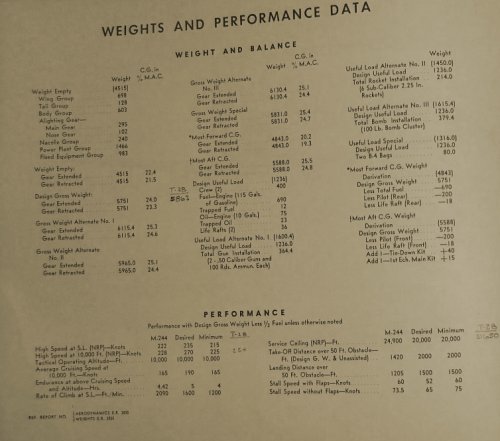- Joined
- 25 June 2009
- Messages
- 14,105
- Reaction score
- 4,227
The Martin Model 244 was a trainer airplane design submitted to the U. S. Air Force's MX-1019 specification, which spawned no less than 28 submissions from 14 companies, and was won by the North American XT-28, with the Douglas XT-30 considered as a backup solution in case the T-28 proved unsatisfactory.
The Model 244 was described by Martin as a "two-place, moderate performance, land, training type airplane," powered by a Wright R-1300 Cyclone engine. The tactical mission of the airplane was to serve as a trainer on which all flying training up to the advanced training stage would be accomplished and on which reserve flying proficiency would be maintained (the USAF eventually amended the specification to make it an advanced trainer only, and launched a separate competition for primary trainers).
In the Model 244, particular attention was given to the improved vision of the aft pilot (raised 5'' over the front pilot). Overturn structure was provided for pilot's protection although the landing gear was of the tricycle type. A tail bumper was provided, and the main gear was retracted forward into a position which offered a maximum measure of protection to the airplane and crew in event of a wheels-up landing.
The aerodynamic configuration of wing loading, aspect ratio, taper ratio, and control surface area was chosen to insure a very high degree of maneuverability with inherent stability and control characteristics at low as well as high speed.
The quick change features of power plant, outer wing panels, tail surfaces and other components, and the complete production breakdown of all manufactured items of the airplane were fully illustrated in the company booklet, dated January 16, 1948, from which the following attachments are taken (the above summary being also adapted from the same document).
The Model 244 was described by Martin as a "two-place, moderate performance, land, training type airplane," powered by a Wright R-1300 Cyclone engine. The tactical mission of the airplane was to serve as a trainer on which all flying training up to the advanced training stage would be accomplished and on which reserve flying proficiency would be maintained (the USAF eventually amended the specification to make it an advanced trainer only, and launched a separate competition for primary trainers).
In the Model 244, particular attention was given to the improved vision of the aft pilot (raised 5'' over the front pilot). Overturn structure was provided for pilot's protection although the landing gear was of the tricycle type. A tail bumper was provided, and the main gear was retracted forward into a position which offered a maximum measure of protection to the airplane and crew in event of a wheels-up landing.
The aerodynamic configuration of wing loading, aspect ratio, taper ratio, and control surface area was chosen to insure a very high degree of maneuverability with inherent stability and control characteristics at low as well as high speed.
The quick change features of power plant, outer wing panels, tail surfaces and other components, and the complete production breakdown of all manufactured items of the airplane were fully illustrated in the company booklet, dated January 16, 1948, from which the following attachments are taken (the above summary being also adapted from the same document).

